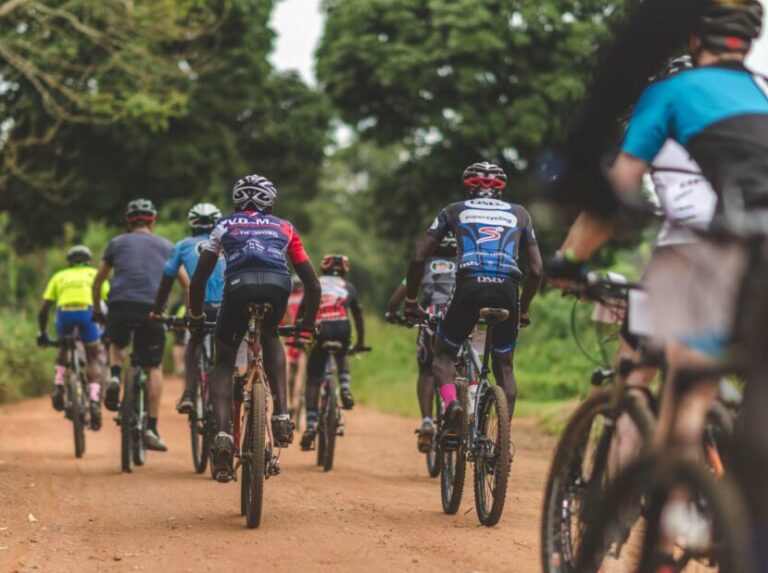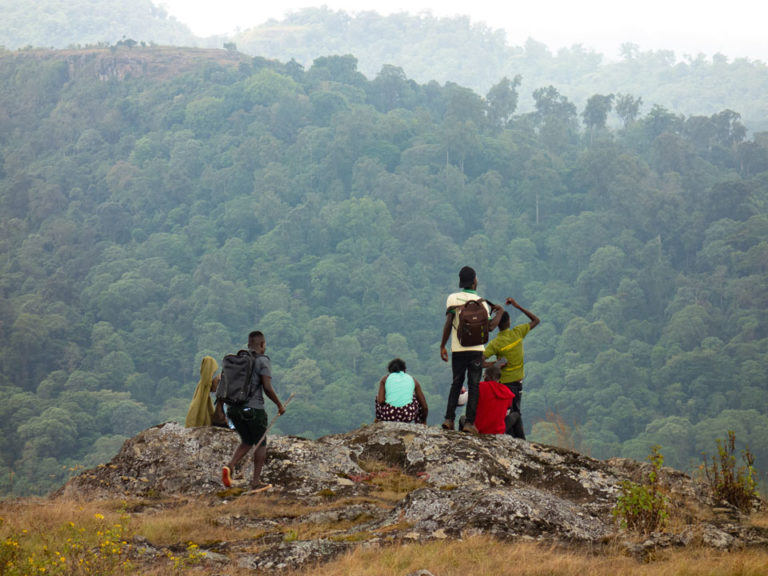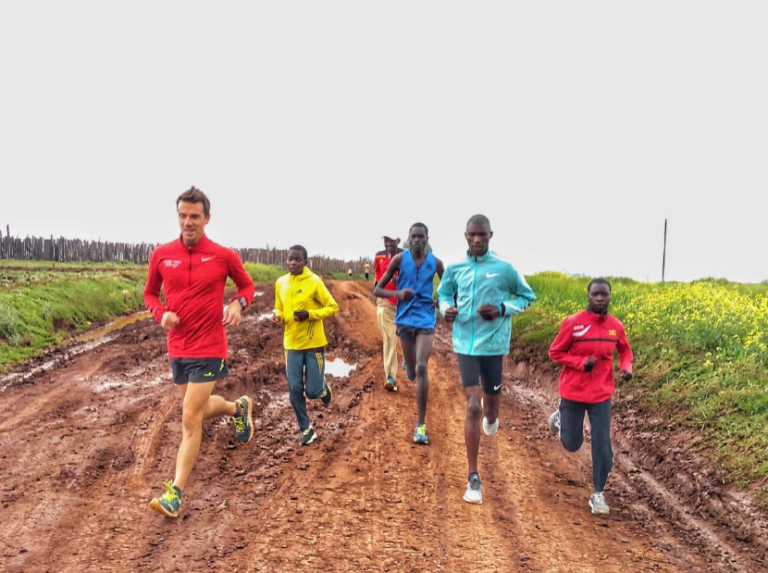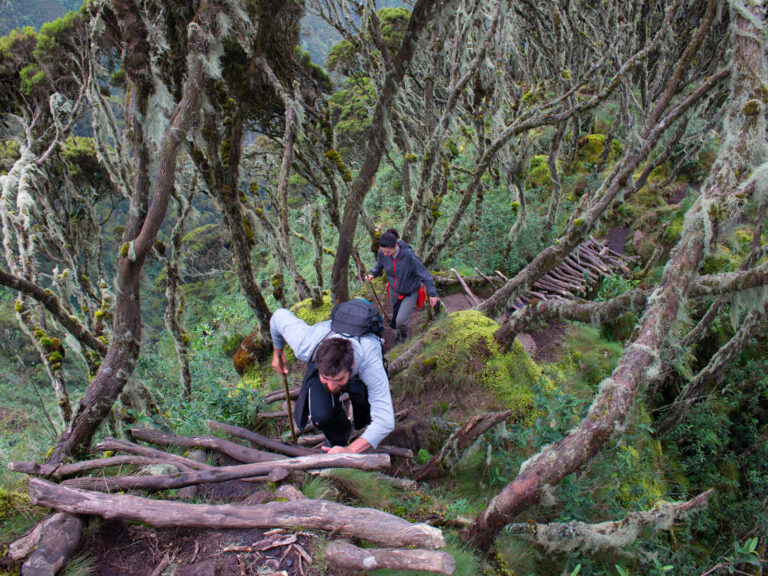Why Uganda is a magnificent cycling destination: observations after cycling for 1600 km on a village bicycle
It started off as a joke: if we really wanted to promote cycling in Uganda and the Uganda Cycling Trail (newly developed by Red Dirt Uganda), why not use the most common, the most accessible and cheapest bicycle of Uganda? Why not use the village bicycle, commonly referred to as Roadmaster or manyi gakifuba? Why not cycle from Kisoro near DRC and Rwanda towards Kidepo Valley National Park near Kenya and South Sudan?
Nobody had ever done so, so even though we used the local-est of bikes, it wasn’t really a typical thing to do. Yes, it would be tough, but probably not impossible if we accepted to just walk here and there, right? (Right???) If we could do it, it would be the greatest adventure of my life. Enter the nerves…
Only a few alterations were made to the bicycles: they were made tubeless, to reduce the amount of punctures, and we replaced the saddle as well as the rack and a few other things to reduce the weight. We only took a minimum of baggage with us. But a sticker on the frame that said “extra heavy”, made sure we were under no illusions: the bicycle would still be tough.

Lawrence knows how to repair bicycles – I do not. Lawrence knows many local languages – I do not. Every day Lawrence wakes up in a good mood – I do not. I relied on Lawrence. While he was my intern at one point, we became friends. He likes adventures – I do too. So off we went.
Uganda lies at the crossroads of most landscapes in Africa, it hosts jungles, mountains, savannas, lakes, cities, hills and even arid, deserts-like landscapes (yes, camels!). We wanted to see all of them, and luckily the Uganda Cycling Trail has been developed in such a way that we would. We would stay away from the main road as much as possible and would find the most scenic trails.
This incredible diversity in landscapes in Uganda is only matched by its cultural diversity. On our journey we passed through at least 12 (and probably more) language areas. What we witnessed throughout the country however, were the warm greetings from locals, their eagerness of finding what we were doing and the surprise on their faces when we explained that we would cycle all the way to Kidepo using these simple bicycles.
One of the key things I found about myself was the ease of building up stamina. Everyday we noticed our energy and sheer muscle power increased. Yes, it was a steady transformation from Lex into Legs. Whereas we struggled on day 1 on the mountains between Kisoro and Kabale, a similar mountainous segment between Mbale and Kapchorwa was quite doable – as a hike, that is. We simply walked. The largest distance we covered in a day was 133 kilometers, which we did on day 20. What nearly killed me was the saddle pain, not the fatigue. We also found that the bicycles can go fast if you keep the momentum going like a diesel. (Yes, I will accept any challenges for a village bicycle race on a bumpy dirt road without a slope.)

The last part of our journey was part of the Tour of Karamoja, which took us to some of the remotest yet beautiful parts of the country. It even took us into Kenya, to the spectacular shores of Lake Turkwel. Whereas the entire journey was an adventure, the second last day truly deserved to be called epic: in the land of the Ik in Northern Karamoja we cycled through showers, thunderstorms and general coldness throughout the day. These were the toughest conditions we experienced.
The final day started off with heavy rain as well. But when we finally reached Kidepo Valley National Park it suddenly cleared up. We couldn’t help but feel as if we reached El Dorado, the Land of Eden, or something of that kind. We did it. It had been quite a journey, a truly memorable one. Of the 1600 km, we probably spent at least 150 km walking. The majority of the 1600 km was on dirt roads.

Uganda is among the safer countries in Africa and pretty cheap. This, in combination with the aforementioned beauty and diversity, makes Uganda a fantastic destination for organized as well as independent cycling tours. Whereas most safari tourists visit mostly the west of the country, cycling tourism has potential throughout the entire country. Cycling tourism is one of the most sustainable forms of tourism and can have economic benefits to countless communities. It can also form an additional business model to help protect the natural environment and biodiversity. We cycled through the national parks of Lake Mburo and Kidepo. Guided by rangers of the Uganda Wildlife Authority, seeing animals such as zebras, buffalos and giraffes from your bicycle is quite a thrill.
For those who have never enjoyed Uganda on a bicycle: believe me, it’s great. And in case you wondered… No, you don’t need a fancy bike: a village bicycle will do.
—
We would like to thank Red Dirt Uganda, Kara-Tunga Arts & Tours and the Tour of Karamoja, Home of Friends Guesthouse and Bike Kapchorwa, EyeOpenerWorks, Dragonfly Media, Moonatic Marketing, the Adventure Tourism Uganda partners, the Netherlands Enterprise Agency, and many, many others for making this biggest adventure our lives possible!
The aftermovie will be released soon. Follow @adventuretourism_ug for updates. All pictures in this blog are taken by Theo Vos of Kara-Tunga. Do not copy them without Theo’s or my consent.







